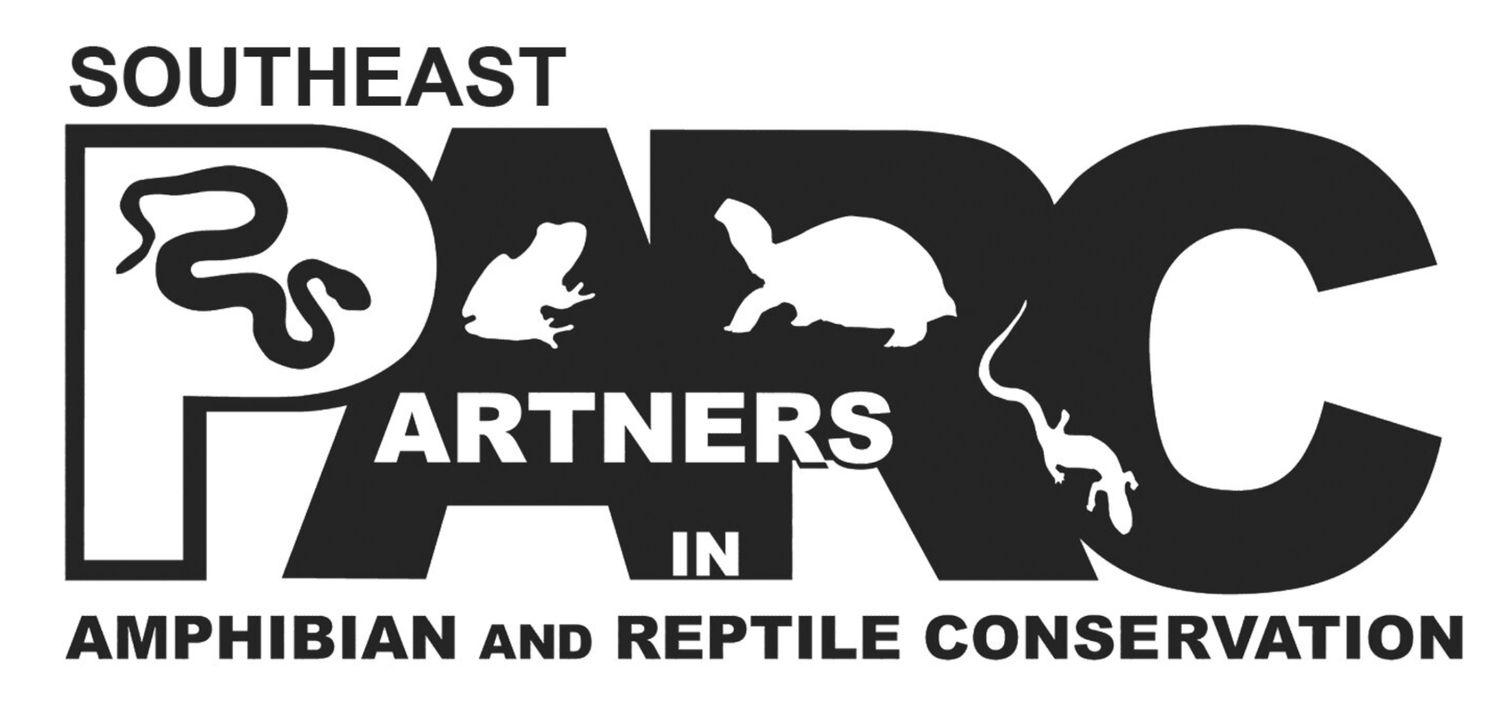About SEPARC
Southeast Partners in Amphibian and Reptile Conservation (SEPARC) is an organization of scientists, naturalists, government representatives and citizens that are devoted to the preservation of amphibian and reptile populations in the southeastern United States, and we serve as the southeast branch of the national PARC organization.
About PARC
The national Partners in Amphibian and Reptile Conservation (PARC) organization is an inclusive partnership dedicated to the conservation of herpetofauna—reptiles and amphibians—and their habitats. Our membership comes from all walks of life and includes individuals from state and federal agencies, conservation organizations, museums, pet trade industry, nature centers, zoos, energy industry, universities, herpetological organizations, research laboratories, forest industries, and environmental consultants. The diversity of our membership makes PARC the most comprehensive conservation effort ever undertaken for amphibians and reptiles.
PARC exists because reptiles (alligators, crocodiles, lizards, turtles, the tuatara, and snakes) and amphibians (frogs, toads, salamanders, and caecilians) have suffered from a broad range of human activities, due in part to the perception that these animals are either dangerous or of little environmental or economic value. We know now that they are important parts of our natural and cultural heritage.
There are branches of PARC throughout the US - we represent the southeastern branch and include the states of Tennessee, Kentucky, North Carolina, South Carolina, Arkansas, Louisiana, Mississippi, Alabama, Georgia and Florida. Other branches of PARC are the Midwest PARC, Northeast PARC, Southwest PARC, and Northwest PARC groups. Visit our PARC locator page to find the region or state chapter nearest you.
PARC is:
a diverse group of like-minded citizens, professionals, and organizations
an open forum for discussing herpetofaunal conservation
a national and international conservation network
a resource for everyone who values herpetofauna and their habitats
based on local, regional, and national efforts
an advocate of inclusive reptile and amphibian conservation
PARC is not:
a competitor
a funding organization
a policy maker
PARC is a unique conservation network because:
PARC includes all reptiles and amphibians
PARC is habitat focused
PARC includes all individuals, organizations, and agencies that have an interest in reptile and amphibian conservation
PARC focuses on endangered and threatened species and keeping common native species common
To learn about our national parent organization, visit the official PARC website.
PARC is organized into five officially recognized regional working groups that serve as the operating entities of the PARC network. Through this system, PARC can focus on national and regional herpetofaunal conservation challenges. Northeast (NE PARC), Southeast (SE PARC), Midwest (MW PARC), Southwest (SW PARC), and Northwest (NW PARC) working groups have been established to allow for specific communication within each region. In addition, at this time we officially recognize the following state chapters and subunits: Alabama, Colorado, Florida, Idaho, Michigan, North Carolina, Wisconsin, and the Caribbean. Click on a region or state chapter on the map below to be directed to the appropriate website.
The Regions of PARC
To learn about our national parent organization, visit the official PARC website.
PARC is organized into five officially recognized regional working groups that serve as the operating entities of the PARC network. Through this system, PARC can focus on national and regional herpetofaunal conservation challenges. Northeast (NE PARC), Southeast (SE PARC), Midwest (MW PARC), Southwest (SW PARC), and Northwest (NW PARC) working groups have been established to allow for specific communication within each region. In addition, at this time we officially recognize the following state chapters and subunits: Alabama, Colorado, Florida, Idaho, Michigan, North Carolina, Wisconsin, and the Caribbean. Click on a region or state chapter on the map below to be directed to the appropriate website.
Each region identifies its priorities and activities. They also work on national projects such as the National Habitat Management Guidelines and the upcoming development of the Inventory and Monitoring Protocol Series. PARC relies on creativity, resources, and donated time provided from each region. The regions offer tremendous opportunities to become involved in PARC and do your part to advance Reptile and Amphibian conservation where you live.




